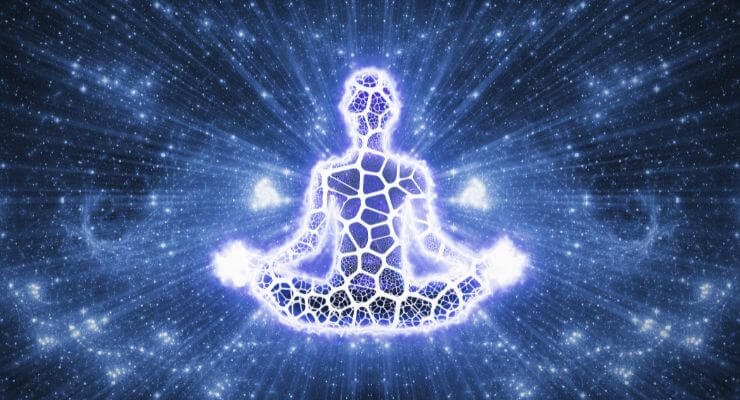What is Nada Yoga? The Yoga of Sound, Vibration, and Silence
In the vast universe of yoga, Nada Yoga is one of the most profound and often misunderstood paths. While many associate yoga primarily with postures (asanas), Nada Yoga invites us into an inner journey through sound, vibration, and deep listening.
In this post, we’ll explore what Nada Yoga is, how it works, and why it’s gaining attention among serious practitioners and teachers looking to deepen their path beyond the physical.
What is Nada Yoga?
The word Nada means “sound” or “vibration” in Sanskrit. But in the context of yoga, it refers to much more than just audible sound. Nada Yoga is the practice of using sound—both external (Ahata Nada) and internal (Anahata Nada)—to quiet the mind and awaken consciousness.
Nada Yoga is described in ancient texts like the Hatha Yoga Pradipika and the Nada Bindu Upanishad as a powerful path toward self-realization.
The Two Types of Nada
- Ahata Nada – Heard Sound
This is the sound we hear through instruments, chanting, or spoken mantra. In Nada Yoga, we use:- Mantra repetition (japa)
- Singing bowls, gongs, harmonium
- Vocal toning and kirtan
These external sounds help train our awareness to focus and refine our inner listening.
- Anahata Nada – The Unstruck Sound
The true goal of Nada Yoga is to experience the unstruck sound—the subtle vibration heard in deep states of meditation. This is considered the gateway to higher states of consciousness, beyond the mind and senses.
Nada Yoga vs. Sound Healing vs. Kirtan
While Nada Yoga shares tools with sound healing and devotional music, it is philosophically distinct:
| Practice | Focus | Goal |
|---|---|---|
| Nada Yoga | Inner and outer sound | Meditation & self-realization |
| Sound Healing | Vibrational therapy for wellness | Relaxation and healing |
| Kirtan | Devotional singing (bhakti) | Emotional connection to the divine |
Nada Yoga includes aspects of the others but emphasizes silence as much as sound—training the practitioner to move from gross to subtle to stillness.
Benefits of Practicing Nada Yoga
- Deepens meditation rapidly
- Activates subtle awareness through listening
- Balances the nervous system
- Enhances vocal clarity and communication
- Opens creative flow and emotional expression
- Helps dissolve egoic thought patterns
Many practitioners report that sound bypasses the analytical mind and goes straight to the heart, making Nada Yoga a direct, embodied spiritual experience.
Nada Yoga in Our 28-Day Teacher Training Program
At Nada Yoga School in Rishikesh, India, we offer one of the only Yoga Alliance-certified nada yoga teacher trainings focused on this ancient path.
You’ll learn:
- The philosophical and scriptural roots of Nada Yoga
- Daily practices using mantra, pranayama, and sound meditations
- How to guide others using voice, silence, and vibrational tools
- Integration with hatha, meditation, and teaching methodology
Plus, you’ll practice in the spiritual energy of Rishikesh, beside the sacred Ganges, where yogis have meditated on these inner sounds for thousands of years.
Is Nada Yoga Right for You?
This path may be calling you if:
- You’re already a yoga teacher or student wanting depth beyond asana
- You feel drawn to sound, vibration, or music
- You’re seeking a meditative, mystical approach to yoga
- You want to access silence through sound, and stillness through listening
Ready to Begin?
Join our upcoming Nada Yoga Teacher Training in Rishikesh.
Discover your voice. Tune your consciousness. Become a guide of inner sound.
Attaining Samadhi through sound is Nada Yoga.
Samadhi is the experience of pure consciousness that transcends mind and body. On the path to experiencing pure consciousness, an individual discovers the wisdom of the body, emotional and cognitive intelligence, the union of body and mind (atman or soul), and the expansion of Atman into Nada Braham or Shabd Braham (God of Sound or Word).
Beyond the experience of Nada-Brahman comes the realization of the Nirgun Brahman or pure consciousness.
Nada means the flow of sound and Yoga means Union. Nada Yoga is the process of the union of the individual mind with cosmic consciousness through the flow of sounds.
When the river of consciousness is impeded by the ego, Nada or special sounds can remove the obstruction allowing the river of individual consciousness to unite with its source, the ocean of pure consciousness.
Nada is also called Shabd or word and is produced either by striking two objects known as Ahat Nad or without striking two objects which are called Anahat Nad.
The Anahat sound can be heard at the Anahat or heart chakra. Anahat Nada is the sound of Aum and is the primal and uncreated vibration through which the universe was born. All other sounds emerge from Aum. Prakriti is energy, energy is vibration and all vibrations are sound.
From human DNA to bacteria and worms, from the earth to solar systems and distant galaxies, and from the newborn stars to black holes, everything has its own sound and music.
The whole universe hums with its own rhythm and frequency. And when we can hum with the frequency of the universe, we become one with it and are transformed into a Nada Yogi.
In Patanjali’s Yoga, Aum represents Ishwara or Sagun Braham (universal consciousness with attributes). Because all other sounds emerged and are an extension of Aum, a Nada Yogi can make any sound a tool to reach the primal sound Aum. And realizes Sagun Braham or Ishwara and then the pure consciousness of Nirgun Braham.
In Semitic tradition, the Bible says ‘In the beginning was the Word, and the Word was with God, and the Word was God.’
On the path of Nada Yoga, the body is healed, the mind recovers its balance and the person becomes a fully functional individual, living with a sense of well-being.
In this sense Nada Yoga works as medicine and therapy, helping a person to lead a healthy, happy, and balanced life in the world.
Sound or Nada meditation is the most powerful path to self-realization.
The reason is that out of the five elements (Panchmahabhuta) which form the microcosm of the body and the macrocosm of the universe, the element of space is the most primal.
Space is connected to the ear, and the ear is the receptacle to sound. In that way sound is the primal experience of all; in comparison to smell, taste, vision, and touch. It is also the most accurate and more precise than the others.
During the dying process, the sense of hearing is the last one to disappear.
That is why in various spiritual traditions around the world when someone is dying, scriptures are read, and sacred mantras are chanted. This brings peace to the dying person.
In Tibetan Buddhism ‘The Book of Living and Dying’ is an example of such a tradition. ‘The Book of Living and Dying’ contains concrete and comprehensive instructions that guide a person to die peacefully, attain freedom or have a good rebirth.
In our world, speech and language have lost their aesthetic and sensual qualities and have become more technical, dry, and intellectual.
Words like love, spirit, energy, passion, and consciousness are repeated endlessly and mechanically. They do not have an impact on the body and mind. They don’t relate to what they represent and don’t stir our feelings to bring change and transformation.
Nada Yoga helps us in discovering the sensual and spiritual qualities of sounds, language, and words. And connects them to the living and non-living things and events which they represent bringing richness to life.
Please let us know your thoughts by commenting below. And don’t forget to share the article.
Want to become a certified Nada Yoga teacher? Join us for the most comprehensive Nada Yoga Teacher Training Program in Rishikesh, India




The sound is god, then words are sounds, god, but the meaning of each word is give by humands???
Please, light me with this dought. 🙏
Namaste
In this blog, the essence of Nada Yoga is beautifully explained, offering deep insights into the power of sound and vibration as tools for inner harmony and spiritual growth.